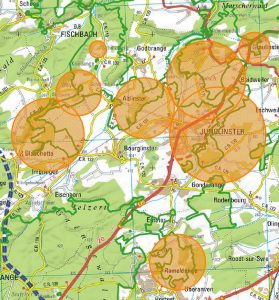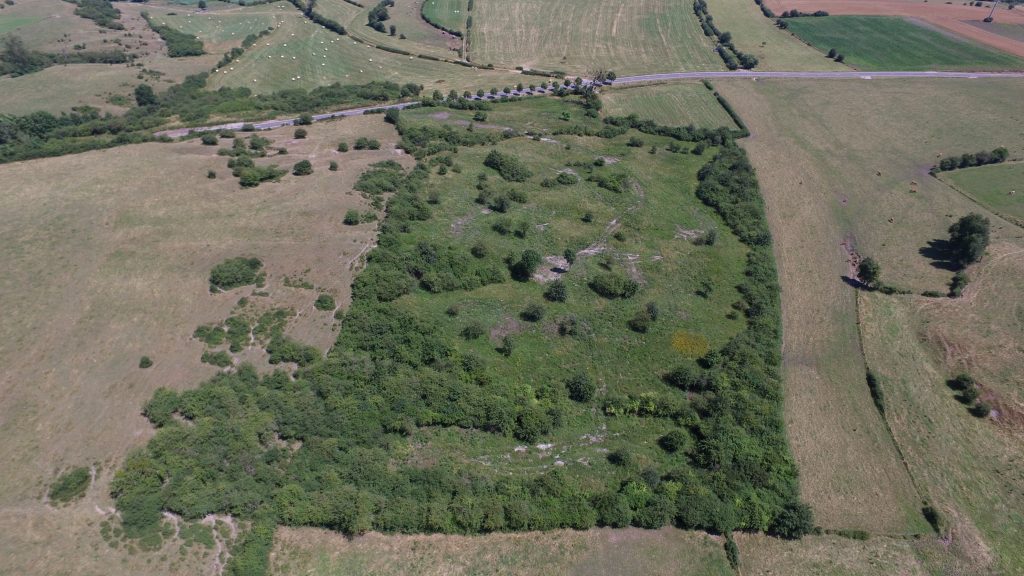
The region of Junglinster is situated in the center of Luxembourg, in the cuesta landscape of the Gutland. The geology is dominated by Arnstadt formations and Rhaet of the Trias as well as psilonotic layers and sandstones of Luxembourg from the Jura.
The region is flown through by the Black Ernz as well as by the White Ernz and presents valleys with pastures or humid meadows. The hills of the region are mostly less vigorous and profound, which explains that calcareous grassland still can be found here. These areas are quite often still managed in an extensive way as well as other tending strategies for the preservation of calcareous grassland are done. Because of the important biodiversity, both flora and fauna, the territory is important. Many bats, butterflies, orthopters, spiders, bugs, harriers, woodpeckers as well as the red-backed shrike find a adequate living space in this area. The same is the case for many plants, like the meadow sage, campanulas, juniper, gentian and 20 orchid species, amongst others different species of the genus Ophrys, can be found in the region.
The habitat of calcareous grassland is very typical for the region around Junglinster, which explains the importance of the preservation and the improvement of this type of biotope. The calcareous grassland and the juniper formations represent, because of their central geographic position, an important connection between the dry grasslands in the East with the ones in the South and the West of the country. The more, the region shows the northern border of the distribution area of some mediterranean dry grassland species. By the report of protection areas, with well adapted management, scrub invasion or forestation of calcareous grassland could be limited. Because many surfaces are threatened in their good condition the elaboration of management plans for the scrub removal followed by pasturing is very important.
